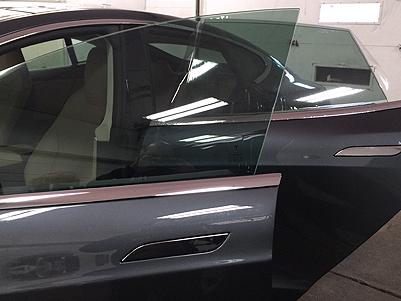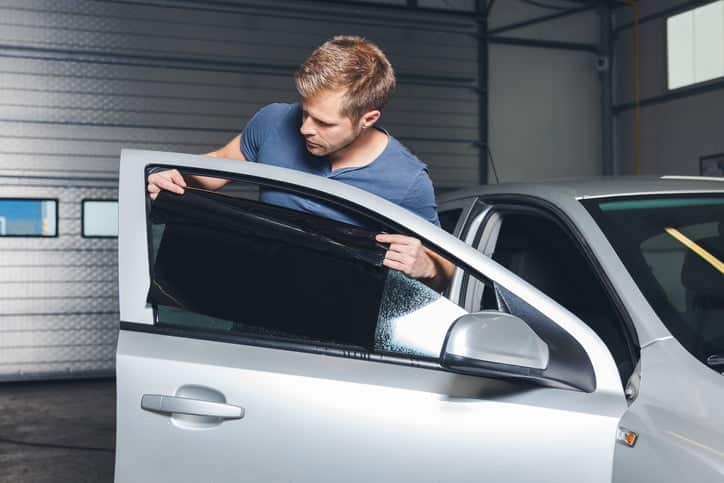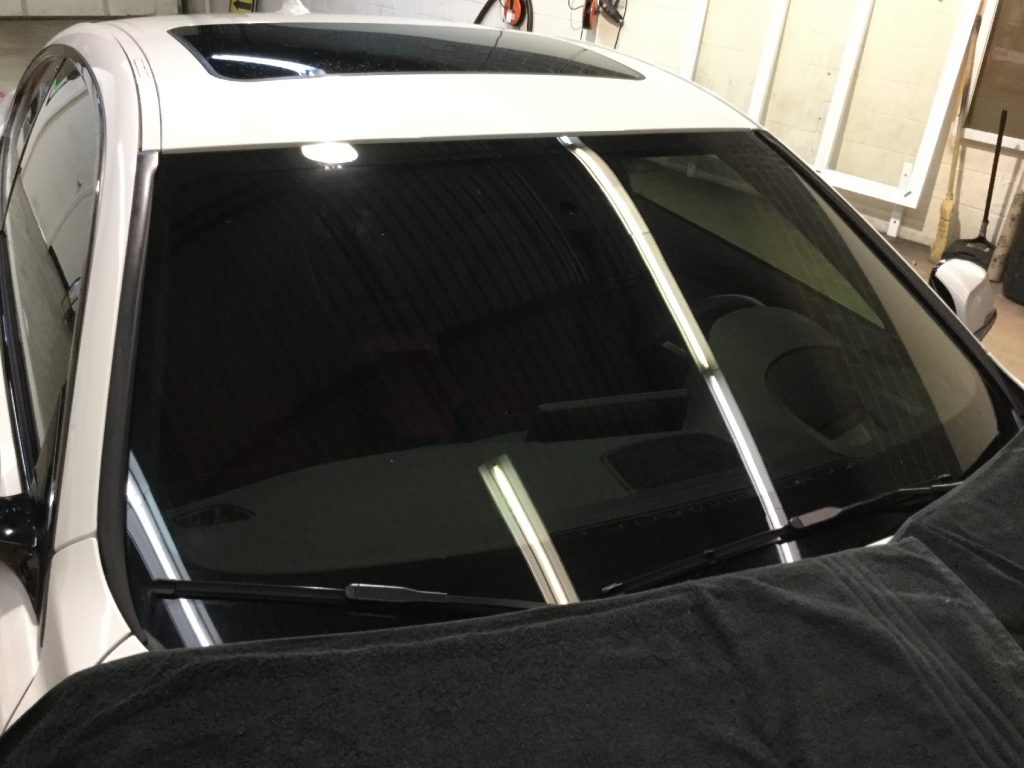A Comprehensive Guide to Understanding Car Home Window Color and Its Benefits
Auto home window tinting offers greater than simply a visual objective for lorries. It uses numerous kinds, each with distinctive attributes and advantages. Understanding these options, together with legal policies and maintenance tips, is important for any type of car owner. The benefits may considerably improve driving comfort and car longevity. As one discovers the nuances of window tinting, the question emerges: what kind of tint is finest matched for private needs?
Recognizing Vehicle Window Tint: What It Is and How It Works
Car window color functions as a safety obstacle that boosts lorry aesthetics while supplying practical benefits. This thin film is put on the interior surface of car home windows, decreasing glare and obstructing harmful ultraviolet (UV) rays from the sunlight. By filtering sunshine, auto home window tint aids to control the indoor temperature of the lorry, resulting in increased convenience for travelers and reduced reliance on air conditioning.Additionally, it protects the automobile's interior from fading, maintaining both furniture and dashboard materials. The color can additionally improve personal privacy, making it harder for outsiders to see inside the automobile. Furthermore, particular kinds of window color can raise security; in the occasion of an accident, the film assists hold shattered glass with each other, lowering the danger of injury from flying shards. Generally, vehicle window tint serves both sensible and aesthetic objectives, making it a preferred option amongst lorry proprietors.
Sorts Of Home Window Tint: An Overview of Options
When taking into consideration window color choices, several types are offered, each with unique features. Dyed, metalized, and ceramic window tints offer varying degrees of warm denial, UV security, and visual charm. Recognizing these distinctions can help vehicle owners make informed choices based upon their demands and preferences.
Dyed Window Color
Colored window color represents a popular option among vehicle owners looking for a budget friendly and efficient means to boost their lorry's aesthetic appeals and personal privacy. This sort of color is produced by putting a layer of color in between a protective layer and an adhesive layer, causing a darkened look that decreases glow and enhances visual comfort. While colored window color effectively obstructs damaging UV rays, it might not use the exact same degree of heat denial as other tint types. Additionally, its shade can fade in time, possibly decreasing its performance. Regardless of these downsides, colored home window tint continues to be favored for its cost-effectiveness and capability to give a smooth, trendy appearance to various automobile designs.
Metalized Window Tint
Metalized window color provides an equilibrium of design and performance, making it a preferred choice amongst cars and truck owners. This kind of color incorporates metal bits within the film, improving both visual appeal and heat being rejected. The reflective high quality of metalized color aids to reduce glare and boost personal privacy, while also offering UV security, which safeguards the automobile's interior. Furthermore, metalized home window color can enhance home window stamina, possibly protecting against shattering throughout crashes. It is crucial to keep in mind that the metallic elements can conflict with electronic signals, such as GPS and cell phone reception. Generally, metalized window tint provides a reliable service for those seeking a combination of look, sturdiness, and sun security for their automobiles.
Ceramic Home Window Color
Ceramic home window tint stands for an advanced alternative in the spectrum of auto home window films, offering distinctive advantages over traditional colors. Unlike colored or metalized movies, ceramic colors use advanced ceramic bits, which efficiently reject warmth and UV rays without jeopardizing visibility. This technology guarantees that lorries remain cooler, decreasing reliance on cooling and enhancing gas effectiveness. In addition, ceramic window colors are less likely to hinder electronic devices, such as GPS or mobile signals, making them a practical choice for modern automobiles. Moreover, their resilience and scrape resistance add to a much longer life-span compared to other kinds of colors. Overall, ceramic home window tint supplies exceptional efficiency, convenience, and protection, making it a preferred alternative for discerning lorry proprietors.
Benefits of Vehicle Home Window Tint: Beyond Looks
While many individuals associate automobile window tint with improved design, its benefits extend far past plain aesthetics. One significant benefit is warm reduction; home window color can block as much as 99% of damaging UV rays, keeping the indoor cooler and securing upholstery from fading. This not only boosts convenience during heat yet also lowers dependence on air conditioning, resulting in enhanced gas efficiency.In addition, auto window color provides an included layer of privacy and safety and security. Tinted windows make it challenging for outsiders to see inside the automobile, which can prevent theft and shield prized possessions. In addition, several colors enhance the glass, minimizing the likelihood of shattering in the event of an accident, therefore boosting safety.In addition to these functional benefits, automobile window color can additionally add to glow decrease, enhancing exposure for chauffeurs and travelers alike. This diverse technique to comfort and safety makes window tint a valuable financial investment for lorry owners.
Legal Considerations: Tinting Rules by State
Before dedicating to auto window tint, car proprietors need to navigate a complex landscape of tinting guidelines that differ by state. Each state has particular laws controling the permissible degrees of tint darkness and reflectivity for various windows, including windscreens, front side windows, and rear windows. These regulations frequently consist of noticeable light transmission (VLT) percentages, which determine just how much light can go through the colored glass.Some states allow darker tints on rear home windows while limiting front side and windscreen colors for security factors. Additionally, certain states may call for a certificate from the maker to confirm compliance with tinting legislations. Breaching these laws can result in penalties, compulsory removal of the color, or both. It is necessary for vehicle owners to research their state's legislations completely to ensure lawful conformity before setting up window color. This why not check here diligence can conserve money and time in the lengthy run.
Choosing the Right Tint: Aspects to Think about
When selecting the proper home window tint for a vehicle, numerous vital variables enter into play. Color darkness degrees, UV protection rankings, and compliance with legal guidelines are important considerations to ensure both looks and functionality - Car Glass Tinting. Examining these facets will certainly help people make an enlightened choice that meets their requirements and adheres to regional legislations
Color Darkness Degrees
Picking the proper tint darkness degree is vital for accomplishing the wanted equilibrium in between looks and functionality in car home window tinting. Different states have differing lawful policies concerning color darkness, which can affect the choice. Generally, tints are measured in percents, with reduced percentages showing darker tones. Darker colors use increased personal privacy and a smooth look however can decrease exposure, particularly at night. Conversely, lighter colors maintain an even more open feel, guaranteeing adequate exposure while still supplying some warmth and glare decrease. People need to consider their driving practices, neighborhood legislations, and personal choices when choosing. Inevitably, the appropriate color darkness level enhances the automobile's look while ensuring security and conformity with legal standards.
UV Security Rating
Color darkness levels play a considerable role in the total performance of automobile window tinting, but an additional vital element to examine is the UV defense score of the selected tint. This rating suggests the percentage of unsafe ultraviolet rays that the tint can block. High-quality tints usually offer 99% or more UV defense, safeguarding guests and the vehicle's interior from sun damage. Long term direct exposure to UV rays can result in skin issues and fading of furniture, making a high UV defense ranking crucial for click here for more health and wellness and durability. When picking home window tint, consumers ought to prioritize this rating alongside darkness levels to guarantee maximum comfort and safety while driving. Understanding these elements aids in making a notified decision when buying vehicle home window tinting.
Legal Laws Conformity
Comprehending neighborhood legal laws is important for any person thinking about auto home window tinting. Each state or area has certain legislations regulating the permitted levels of color darkness and reflectivity for various windows. These policies typically specify the visible light transmission portion, identifying just how much light can go through the colored glass. Non-compliance can result in fines, necessary removal of the color, or issues during vehicle evaluations. Additionally, some locations might have constraints on the usage of particular tinting materials, requiring customers to select items that meet security criteria. It is vital for car owners to investigate their regional laws extensively before picking window tint to guarantee compliance and stay clear of prospective lawful problems.
Setup Process: DIY vs. Specialist Services
Just how does one make a decision in between a DIY setup and working with professional services for vehicle home window tinting? The selection commonly rests on budget plan, experience, and wanted results. A do it yourself strategy can be economical, allowing individuals to minimize labor costs. It requires a certain level of ability and expertise concerning the tinting process. Those who are meticulous and individual might locate success with do it yourself packages readily available in the market.Conversely, professional solutions provide know-how and high-quality materials, ensuring a flawless finish. Professionals often ensure their job, providing satisfaction against possible concerns such as gurgling or peeling. Furthermore, they are familiar with neighborhood legislations regarding tinting, which can be complicated for the average auto owner.Ultimately, the decision mirrors an equilibrium in between expense, personal capability, and the expected quality of the tinting job. Each choice has its advantages, and the most effective selection relies on private conditions and choices.
Maintenance Tips: Keeping Your Color in Leading Condition
Preserving the look and functionality of home window color requires routine interest and care, specifically in varying climate problems. To protect the tint, it is necessary to stay clear of utilizing abrasive cleaning materials, which can scratch or harm the film. Car Glass Tinting. Rather, soft microfiber cloths and mild, ammonia-free cleaners need to be made use of for cleansing the colored surfaces.Furthermore, it is recommended to wait a minimum of one month after installation prior to cleaning the home windows to allow the color to completely stick. Vehicle parking in shaded locations or making use of sunshades can help minimize the fading effects of UV rays and lengthen the tint's life-span. Regular examinations for bubbles, peeling off, or staining are suggested, as very early detection can assist in repair services. Ultimately, preventing severe temperature variations, such as pressing hot home windows in winter, will aid maintain the tint's honesty and appearance with time
Regularly Asked Inquiries

For How Long Does Window Color Generally Last on an Automobile?
Home window tint generally lasts between 5 to ten years, depending on aspects such as quality, application, and ecological problems. Normal upkeep and correct treatment can expand its life-span, making certain ideal performance and look with time.
Can Home Window Tinting Damage My Vehicle's Original Glass?
Window tinting, when applied appropriately, does not damage a vehicle's initial glass. Nonetheless, improper setup or low-quality products might cause concerns like bubbling or peeling off, potentially impacting the glass's honesty in time.
Is Home Window Tinting Safe for All Types of Automobiles?

Will Window Tinting Gap My Auto Warranty?
The question of whether home window tinting gaps an automobile guarantee commonly relies on the supplier's plans. Generally, if the color does not damage the car, guarantees generally continue to be undamaged. However, consulting the supplier is advisable.

Can I Get Rid Of Home Window Tint Myself if Needed?
Getting rid of window great post to read color oneself is possible, yet it needs cautious attention to stay clear of damaging the glass. People ought to utilize ideal devices and techniques to guarantee a successful elimination without leaving glue deposit or scrapes behind. While dyed window color efficiently obstructs unsafe UV rays, it might not use the same degree of heat being rejected as various other color kinds. Ceramic home window color stands for an advanced option in the spectrum of automobile window films, supplying unique advantages over conventional tints. Before dedicating to automobile window color, lorry proprietors need to navigate an intricate landscape of tinting policies that differ by state. These laws typically consist of visible light transmission (VLT) percentages, which determine how much light can pass via the tinted glass.Some states allow darker tints on rear home windows while restricting front side and windshield colors for security factors. Tint darkness degrees play a significant duty in the total performance of auto home window tinting, however an additional crucial variable to examine is the UV defense ranking of the selected color.